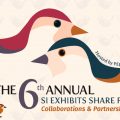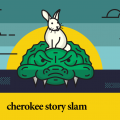Talking comics and culture with artist Evan Keeling
Evan Keeling is a graphic artist and exhibition specialist for Smithsonian Exhibits. He also creates comics that support exhibitions and programs around the Institution, focusing on subjects such as the Japanese American incarceration during World War II and Smithsonian scientists’ conservation work. At both D.C.’s Awesome Con and the Smithsonian’s recent Solstice Saturday/By The People Festival, he helped participants create their own personalized comic books. Marilyn Scallan spoke with Evan about his work.
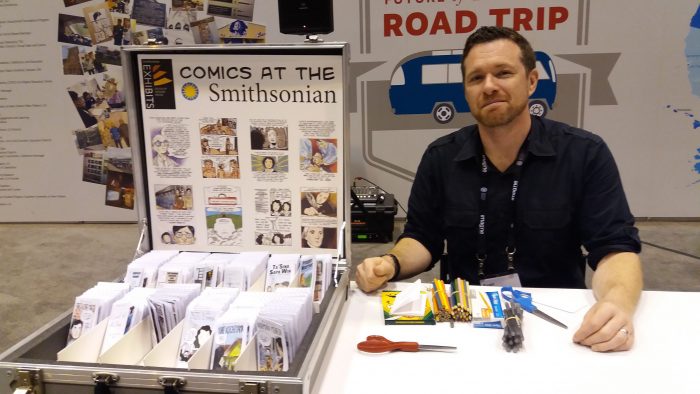
Exhibit graphics specialist and comic artist Evan Keeling. (Photo retrieved from http://exhibits.si.edu/portfolio/earthoptimismcomics/)
When did your interest in comics begin, and when did you start writing and drawing them?
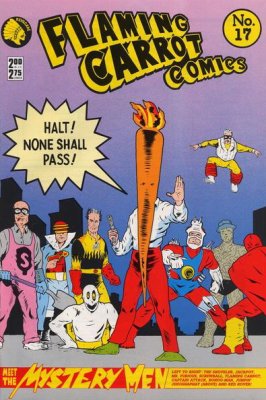
Flaming Carrot Comics No. 17 from Renegade Press. The beginning of it all for Evan Keeling.
I have been drawing my whole life and had picked up comics here and there and been sent comics while at camp or from relatives. I often attribute my true discovery of comics to Flaming Carrot Comics No. 17. IT was given to me for Christmas and really opened my eyes to the insane things you could do with comics. Shortly after that Christmas, my father started treatment for a bone-marrow transplant in Seattle, and I started alternating between coasts. In Seattle, I visited my first comic book store, Golden Age Collectables, deep in the underground of Pike Place Market. After that I was hooked, and I was looking for comics in everywhere from comic book stores to newsstands to bookstores to any hole in the wall that might have comics.
I started trying to write and draw them at that time as well. I have pages and pages of unfinished comics and a backbreaking box full of sketchbooks of ideas. Actually finishing a comic wouldn’t happen until much later.
In 2004, right as I was starting a temporary position at the Smithsonian’s Office of Exhibits Central, I met a number of comic book creators and we started communicating online in a yahoo group we named the DC Conspiracy. These online chats turned into monthly meetings and then grew into collaborations, group projects, workshops and events that continue to this day.
That collaborative engagement pushed me to focus on getting better and better and work more and more so I would have something new to share with the group every time I saw them. That was the impetus for me to start finishing comics and expanding the kind of work I did.
What comics have you created at the Smithsonian, and how are they used?
My first comic at the Smithsonian was “Captain Capture,” which was about a superhero explaining the Digitization Program Office’s rapid capture procedure to a curator. While this was a little different from what I normally worked on, it was a good first step to show my office that there was potential in this type of service.
I started talking to my office about reaching out to museums to look into the potential of using comics in their educational programs. I connected with the education team at the Museum of American History and their Youth Civic Engagement Program we partnered with the Hirshhorn’s ArtLab+, and we created a series of mini-comics about the Japanese American incarceration during World War II. These were used as part of teaching material to accompany a live summit about the subject.
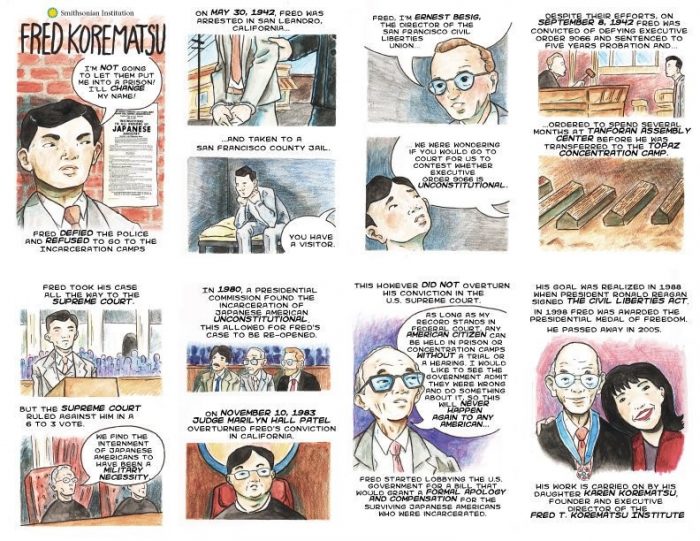
One in a series of comics Evan Keeling created to tell the stories of Japanese Americans incarcerated in internment camps during WWII.
I then did comics about Justice Sotomayor and Thomas Jefferson to hand out at the National Portrait Gallery’s Constitution Day event. I did two comics interpreting the visions of artists involved in the Asian Pacific American Center’s Ctrl+Alt pop up, as well as a drop in workshop at the two-day event. I made three comics about the conservation efforts of Smithsonian scientists for the Earth Optimism Summit, and had a drop-in workshop there as well along with live comic creating by artists that I invited to be part of my table. I recently created a comic for SITES about the Apollo 11 mission to accompany their “Destination Moon” exhibition, also developing a teaching document for docents and educators to put on comic making workshops about the exhibition.
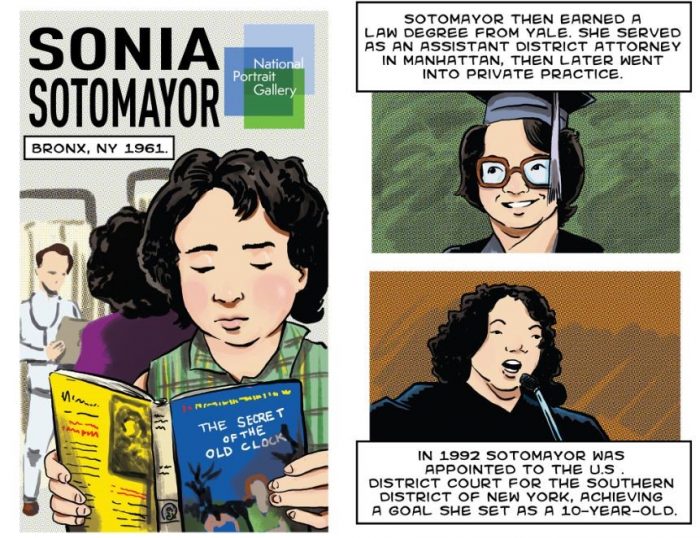
Keeling created a comic about Supreme Court Justice Sonia Sotomayor for the National Portrait Gallery’s Constitution Day event.
These comics are used by the museums for education and outreach. Sometimes they are tied to a specific program or event, sometimes they are brought out for special events. They are a resource that the museums can use as much or as little as they like, and since the comics are a digital file that can be easily printed in the office, they can print them out and use them as needed without having to store copies.
I also take the comics out to local comic book shows like Awesome Con and the Small Press Expo to hand out, or at Smithsonian events like the recent By The People Festival where I handed out the comics and put on two drop-in comic-making workshops. Where people made their own comics using templates, I designed based on the mini-style of comics I make for the Institution.
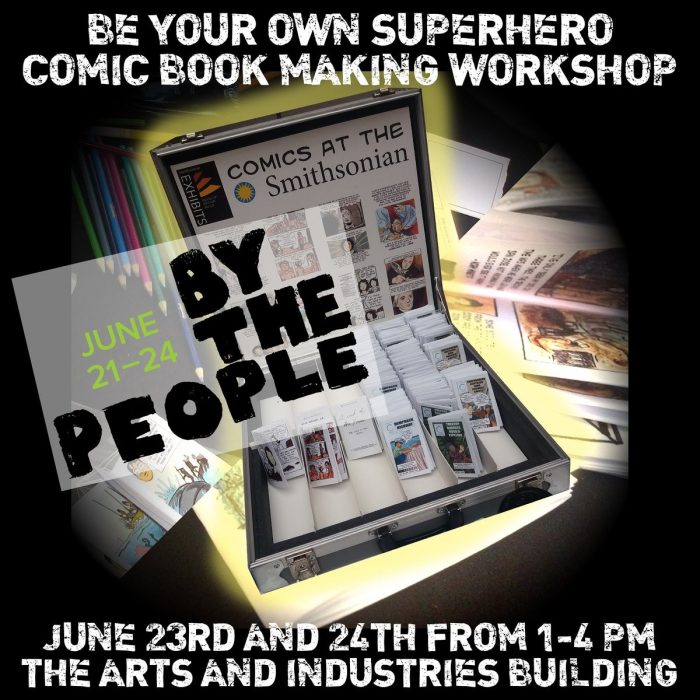
Evan Keeling hosted a comic-making workshop at the recent Smithsonian Solstice Saturday / By the People arts and performance event in June.
Do you think comics are a good teaching tool?
A lot of times comics are a great intro to a subject. The form can be less daunting than a book, especially when it comes to difficult or complex subjects. You can pull people in with the art or the subject. You gather information from comics in a different way than you do from a book. The reader will focus on different aspects of the story and the information presented. A lot of times the focus is on the ease for reluctant readers, but there is joy in the merging of words and pictures that goes far beyond reading level.
The making of comics also brings an extra layer to the learning process. By the act of creating you have to think of the subject in different ways. You have to look at different parts of the story like style of hair and clothes to the structure of buildings to simply the act of having to craft a story with what you have learned as opposed to just sharing the information as a list of facts. It also pushes you to think about how events go from A to B.
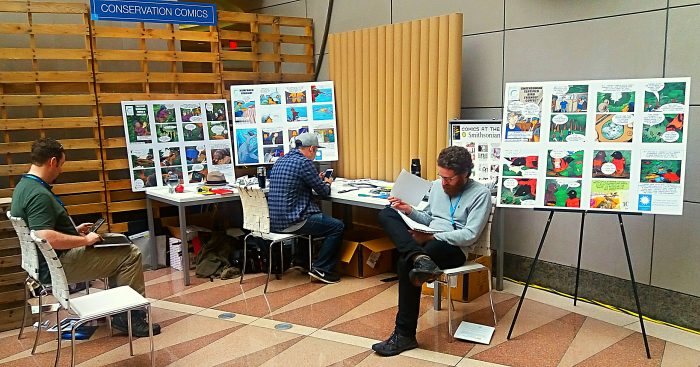
A comics workshop hosted by the Smithsonian at the 2017 Earth Optimism summit.
What’s next for your comics?
I am currently working on a comic with the Smithsonian Latino Center about the Treaty of Guadalupe, which they will use in their education and interactive elements when they open up their gallery in the American History building. I am actively looking for departments in the Institution to collaborate with. My hope is to have at least one comic that will touch on the missions of all the Smithsonian museums. More workshops like the one I put on at the By The People Festival would be great as well as some more individually focused workshops at different museums.
I am also preparing my comics so that they can be accessed from the Smithsonian learning lab and searchable amongst all the other resources at the Institution.
Of course, I keep making comics all the time and am always thinking of more and more ideas every day. Hopefully I will eventually be able to align the time I have with the amount of ideas I generate.
Why do you think comics have become so huge in pop culture?
I think the superhero comics have blown up because of the movies and people’s great love for the hero’s journey.
I think comics in general have been so present in popular culture because of the large breadth of stories you can tell with them. For a number of years we were in the “Hey comics….They’re not just for kids” era that came out of the success of Maus and the emergence of the graphic novel. But I think now we have fully entered into the “look at all the amazing things you can do with comics” era. Creators are really challenging the different types of subjects and styles that can be addressed with comics. You can get important words from great leaders like Rep. John Lewis in the graphic novel series March to the voices (in their own words and pictures) of the leaders of the future in books like Voces Sin Fronteras. Comics are accessible for learning at the same time being empowering and a form that anyone can use to tell their own story. They only need to take the leap and give it a try.
Posted: 27 July 2018
- Categories:
